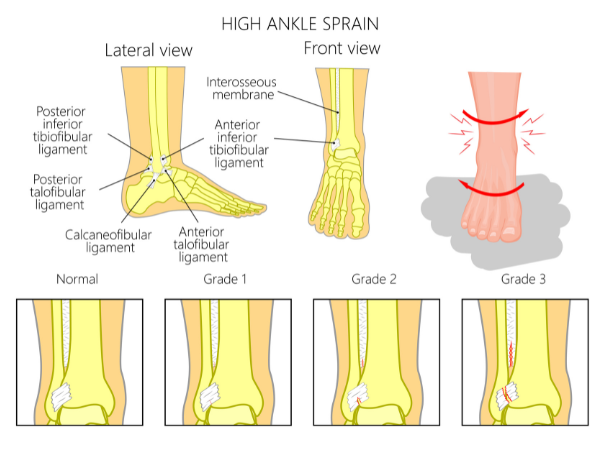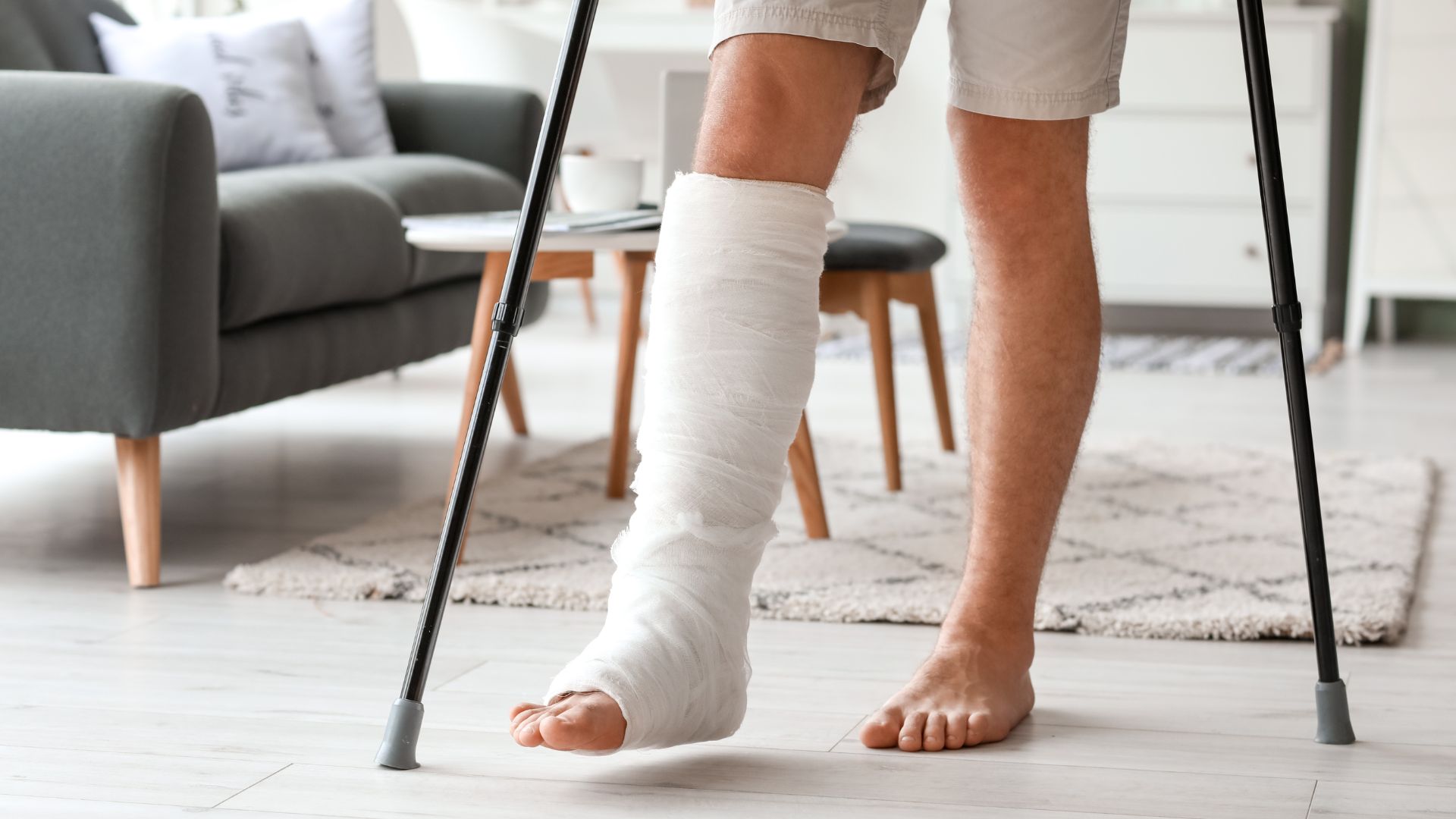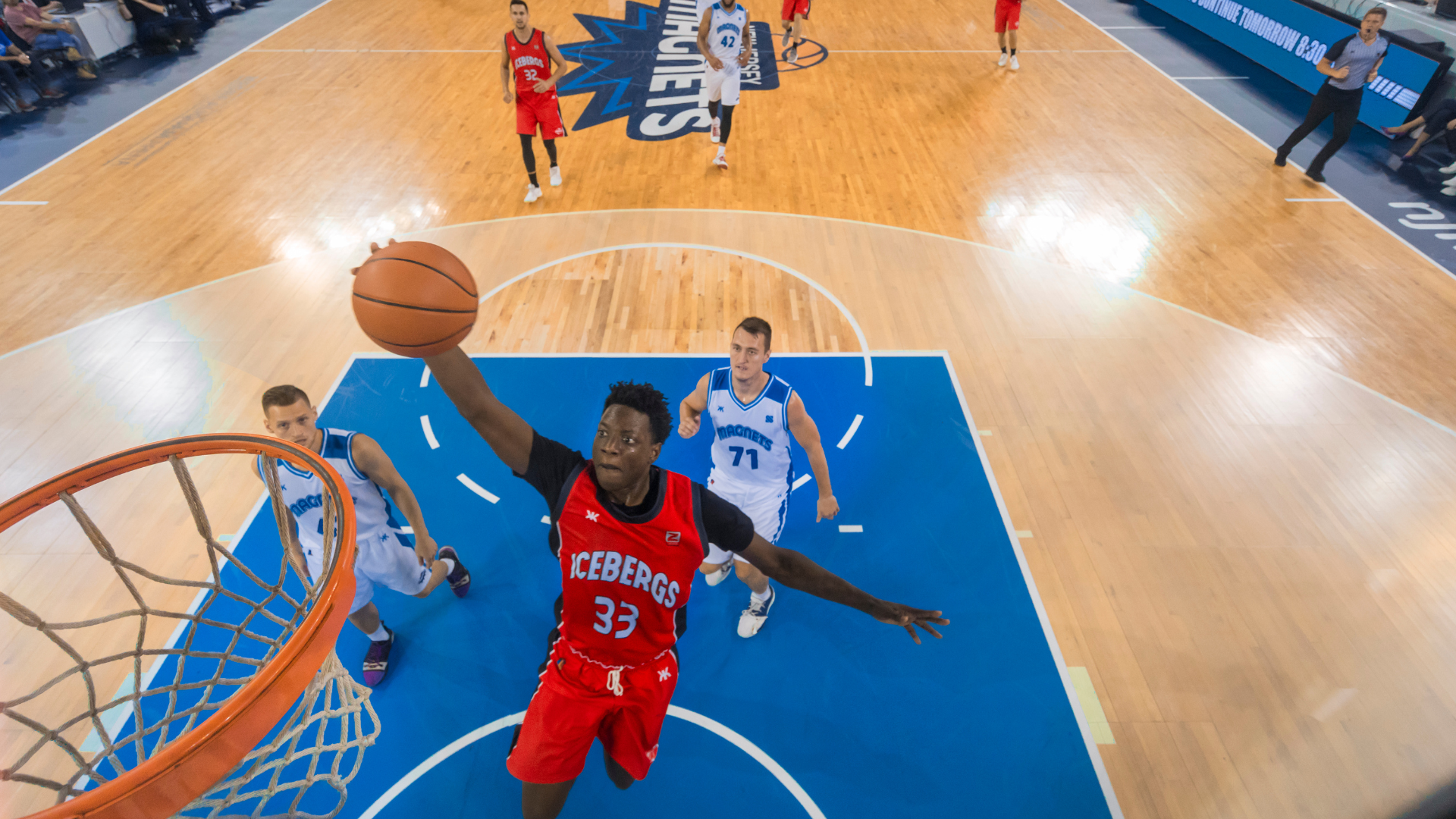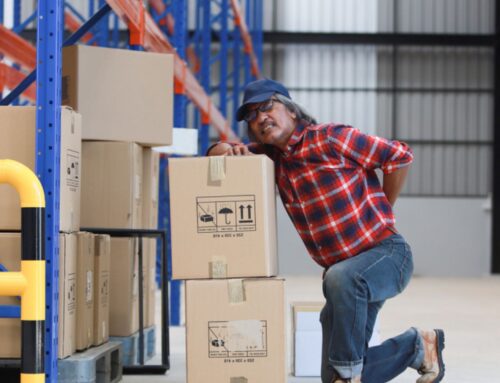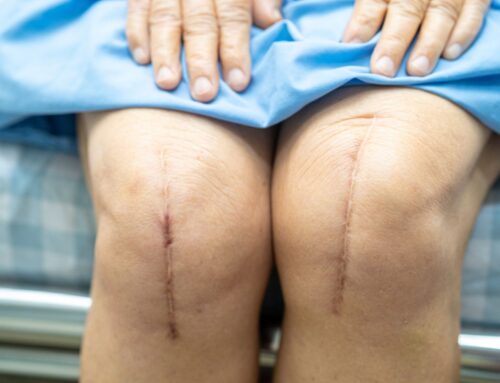A physiotherapy approach to high ankle sprain rehab will involve restoring ankle stability, joint integrity, optimal muscle tension and loading, while also focusing on a safe return to sport or activity.
A high ankle sprain injury most commonly occurs during high impact sports. However, it can happen under any conditions where higher forces put the ankle in a vulnerable position that stresses the ligaments, like a jump or a fall.
High ankle sprains are complex injuries that can require longer recovery times than other orthopedic injuries. For this reason, it is important to get the correct diagnosis and treatment as early as possible.
In this article, we discuss the anatomy of the ankle and mechanism of the sprain, signs and symptoms of a high ankle sprain, as well as physiotherapy treatment and the downside of leaving it untreated.
Table of Contents:
- What is a high ankle sprain?
- What causes a high ankle sprain?
- Signs and symptoms of a high ankle sprain?
- What if a high ankle sprain is untreated?
- What is a physiotherapy approach to high ankle sprain?
What is a High Ankle Sprain?
A high ankle sprain is an injury that involves tearing of the ligaments that hold the tibia (big shin bone) and fibula (smaller lower leg bone) together. These ligaments are at the distal portion of the leg, located just above the ankle joint. A high ankle sprain is also known as a syndesmotic ankle sprain.
The syndesmosis is a fibrous joint held together by ligaments. In the case of the ankle, these are the anterior inferior tibiofibular ligament, superficial posterior inferior tibiofibular ligament, superficial posterior inferior tibiofibular ligament, transverse tibiofibular ligament, interosseous membrane, interosseus ligament, and inferior transverse ligament.
This syndesmosis is responsible for maintaining stability of the tibia and fibula, and keeps the ankle joint in an optimal position. This differs from the more common lateral ankle sprain which is located lower, at the intersection of where the ankle meets the foot.[i] As the name may indicate, a high ankle sprain is higher up on the ankle.
You may also enjoy reading: Ankle Sprain Physiotherapy
What Causes a High Ankle Sprain?
The most common mechanism of high ankle sprain injury is rolling over on the ankle. People who have suffered from high ankle sprains chronically may also find injuries involve upward bending (dorsiflexion) and external rotation, or outward pointing of the ankle (eversion).
High ankle sprains usually occur in high impact sports that lend themselves towards excessive twisting (external rotation), upward bending, and eversion while under a heavy load.
Examples of how high ankle sprain injuries are most likely to occur include:
- football players landing in an awkward position at the bottom of a pile,
- downhill skiers landing awkwardly under higher impact,
- and lateral rotation, such as sliding into the boards skates-first while on the ice playing hockey.
In general, a high ankle sprain requires higher forces that put the ankle in a vulnerable position that stresses that syndesmotic ligament the most.[i] Due to the anatomy and shape of the ankle joint, aggressive twisting, upward bending, and outward rotation put undue stress on the syndesmosis and can cause a high ankle sprain.
You may also enjoy reading: AC Joint Separation Treatment
Signs and Symptoms of a High Ankle Sprain
People who suffer a high ankle sprain typically have a lot of difficulty weight bearing initially, increased loss of plantar flexion (pointing ankle and toes downward) and may or may not present with latent swelling and bruising.
It is common for high ankle sprain injuries not to heal as quickly as previous ankle sprains or other sport-related injuries.
Given the complexities of a high ankle sprain, it’s important to have this correctly diagnosed and to rule out fractures of the ankle or foot.[i]
You may also enjoy reading: Fracture Treatment for the Most Common Types of Fractures
What Happens if High Ankle Sprains are Untreated?
Untreated high ankle sprains have been shown to be associated with recurrent sprains. Additionally, when a fracture is also sustained with the high ankle sprain it can require longer times for returning to sport or activity at the same level as pre-injury. Therefore, it is best to address high ankle sprains immediately to make the most of a recovery period and obtain an appropriate diagnosis on stability and severity of the injury.[ii]
You may also enjoy reading: Does Ice Help with Inflammation
Physiotherapy Approach for High Ankle Sprain Rehab
A physiotherapy approach to a high ankle sprain rehab includes appropriate immobilization for the acute periods of injury and ensuring there no fractures present. After the appropriate immobilization period is established, the physiotherapist will work with the client to restore the lost range of motion (plantar flexion and dorsiflexion of the ankle are commonly dysfunctional after a high ankle sprain).
In addition, the physiotherapist may use modalities such as acupuncture, ice (cryotherapy), and specific forms of manual therapy to decrease the swelling. Compressions garments, walking boots, and ankle supports may also be appropriate, depending on the severity of the high ankle sprain and its level of instability.
In the later stages of recovery/physiotherapy, what sets high ankle sprain rehab apart from the more common lateral ankle sprain is the focus on body awareness of the ankle joint when doing dynamic movements and how the joint interacts with the distal tibia and fibula.
Movements and exercises like single leg deadlifts, single leg balance while performing other movements or with added tension , exercising on different surfaces, and a focus on sport-specific movements are what many physiotherapists progress their clients to perform in later stages of recovery.
Neuromuscular training is an integral part of high ankle sprain rehabilitation and many return to sport regimens. This is a combination of exercises that ensure ankle stability, joint integrity, optimal muscle tension and loading, while also taking into consideration sport-specific movements and environmental contexts.[iii]
At Propel Physiotherapy, our staff of experienced and knowledgeable therapists can help diagnose and treat your injuries. Our team of physiotherapists can customize an ankle sprain physiotherapy program specific for your symptoms and goals and provide education on the optimal treatment approaches. To learn more about our orthopedic rehabilitation services, connect with one of our clinicians at Propel Physiotherapy in Etobicoke, Pickering, or Peterborough.
You may also enjoy reading: Knee Osteoarthritis Physiotherapy
References
[i] Norkus S, Floyd RT, The Anatomy and Mechanisms of Syndesmotic Ankle Sprains. J Athletic Training. 2001;36:68-73
[ii] Calder D, et al., Stable Versus Unstable Grade 2 High Ankle Sprains: A Prospective Study Predicting the Need for Surgical Stabilization and Time to Report to Sports. J of Arthroscopy & Related Surgery. 2016; 32 (4): 634-642.
[iii] Magee D. Orthopedic Physical Assessment. 4th Edition. St. Louis, Missourie: Saunders Elsevier; 2006.
Written by


